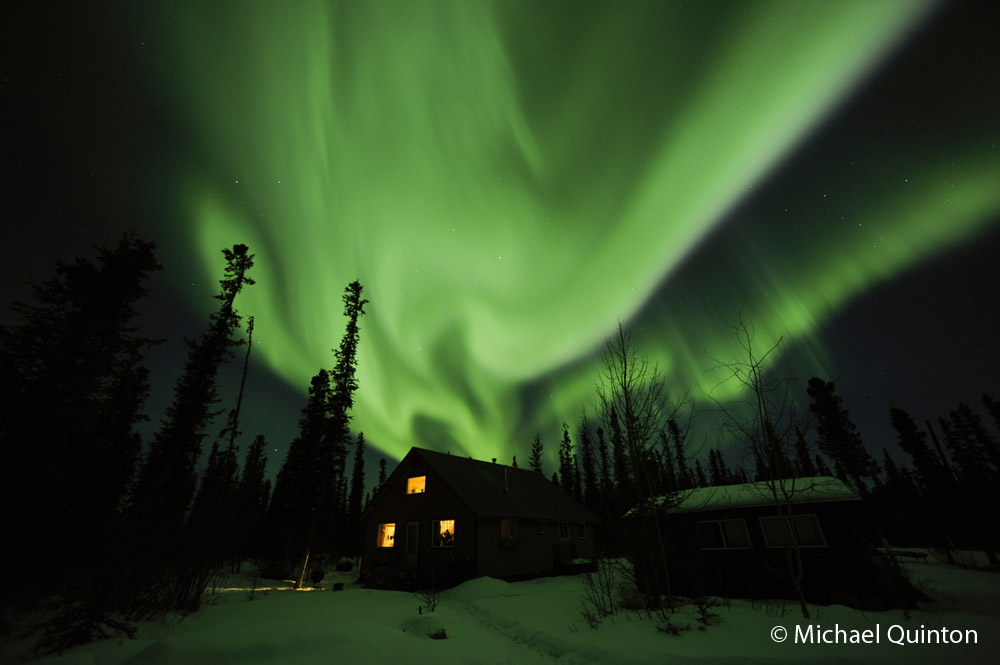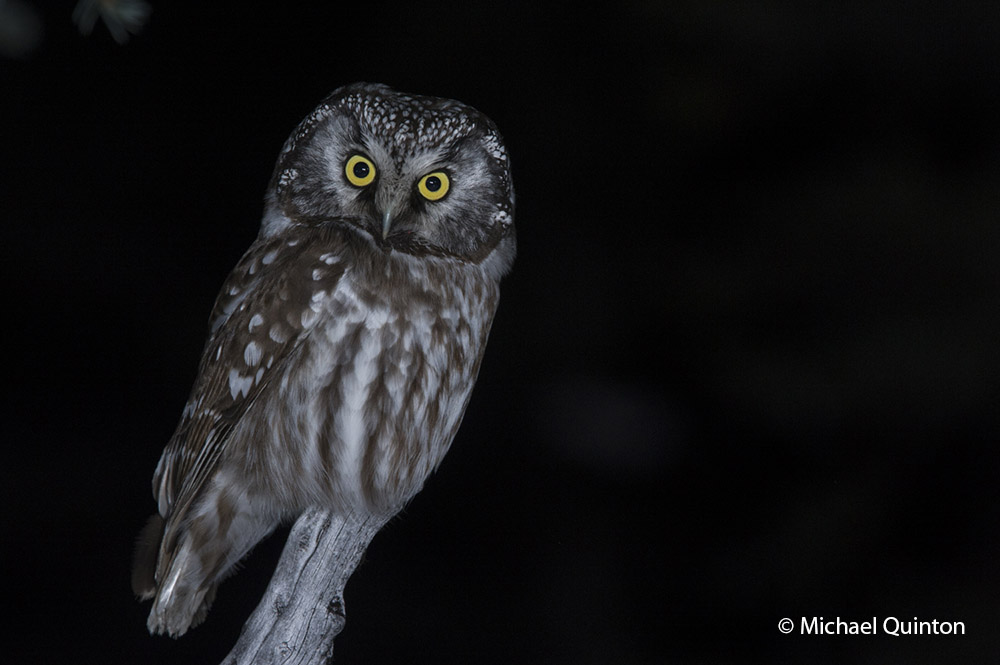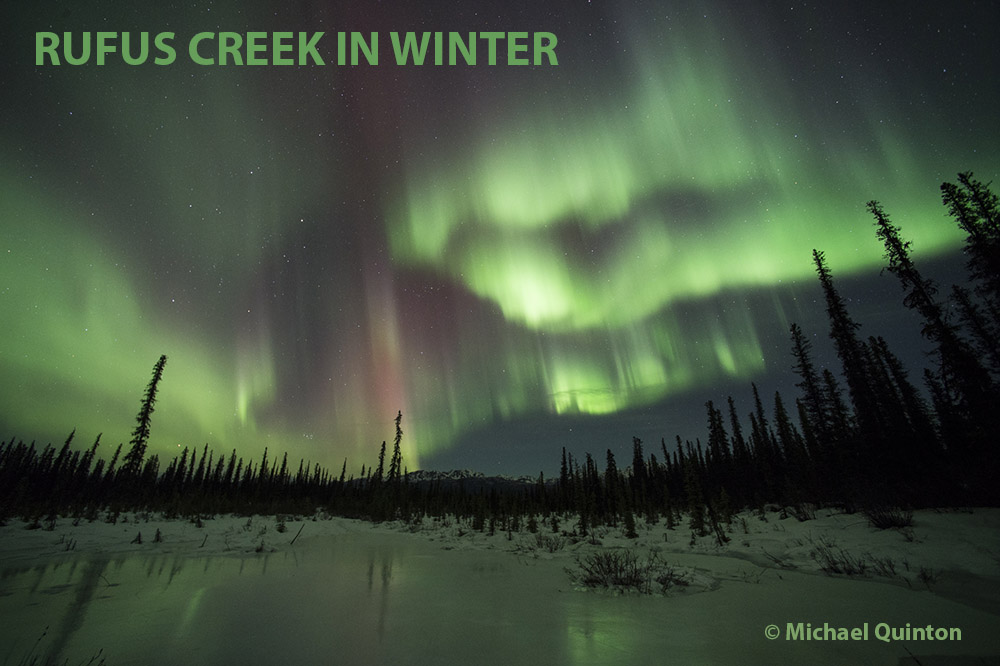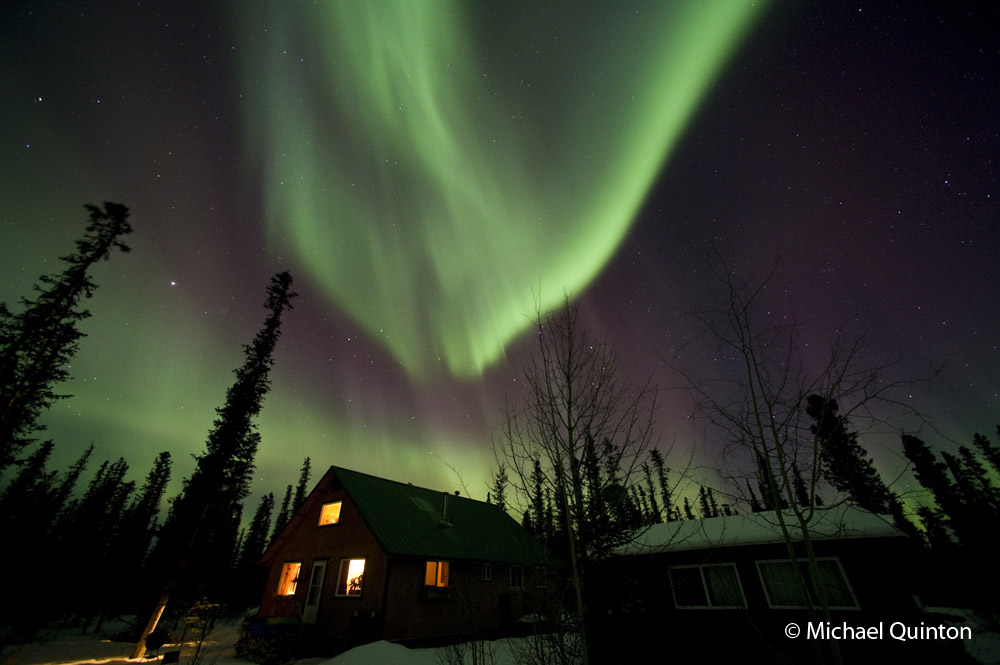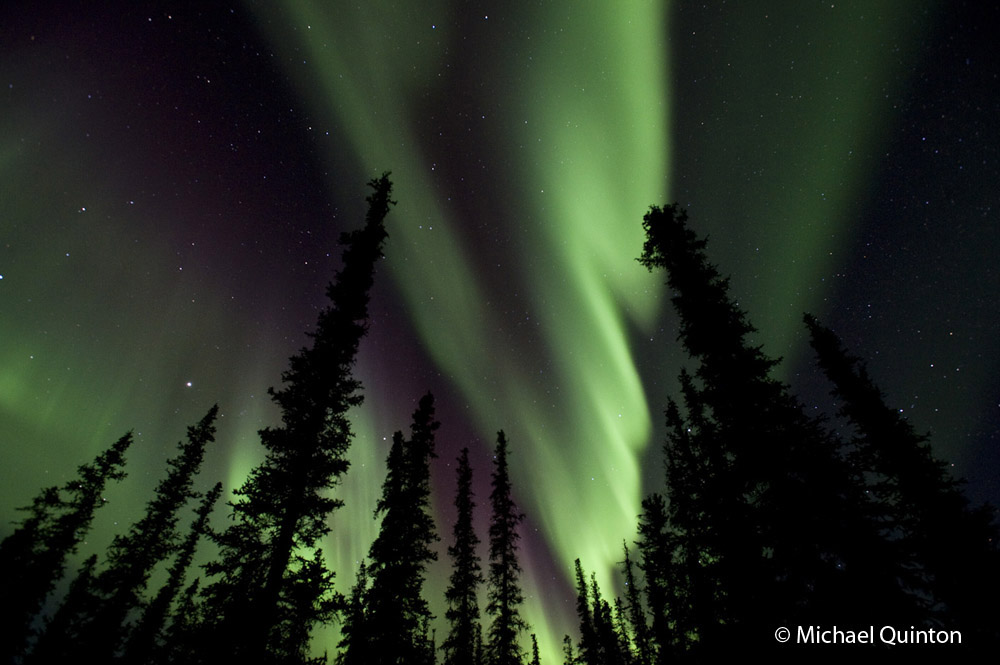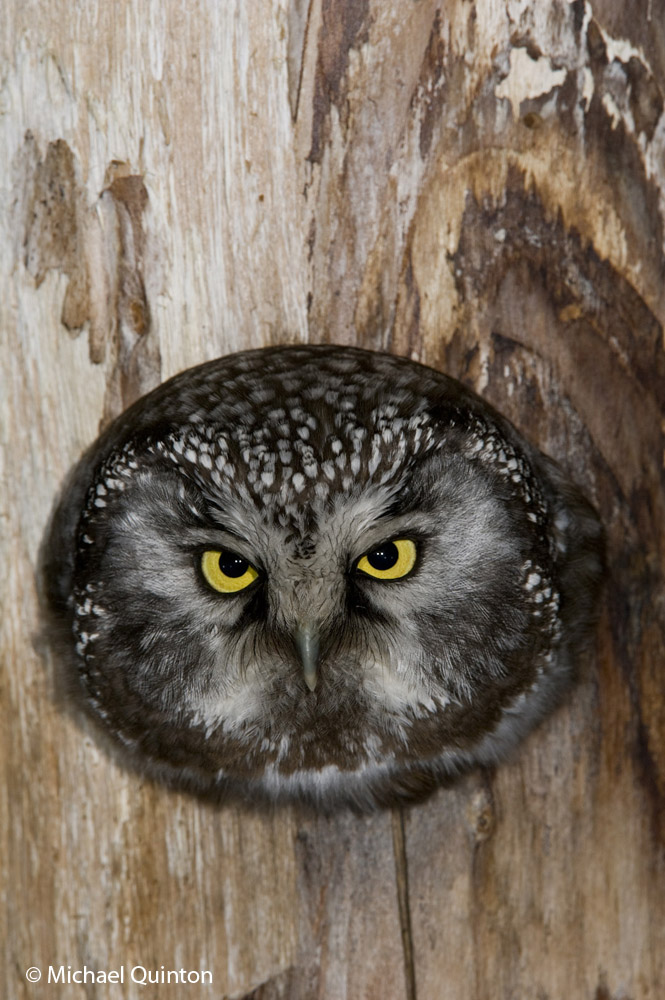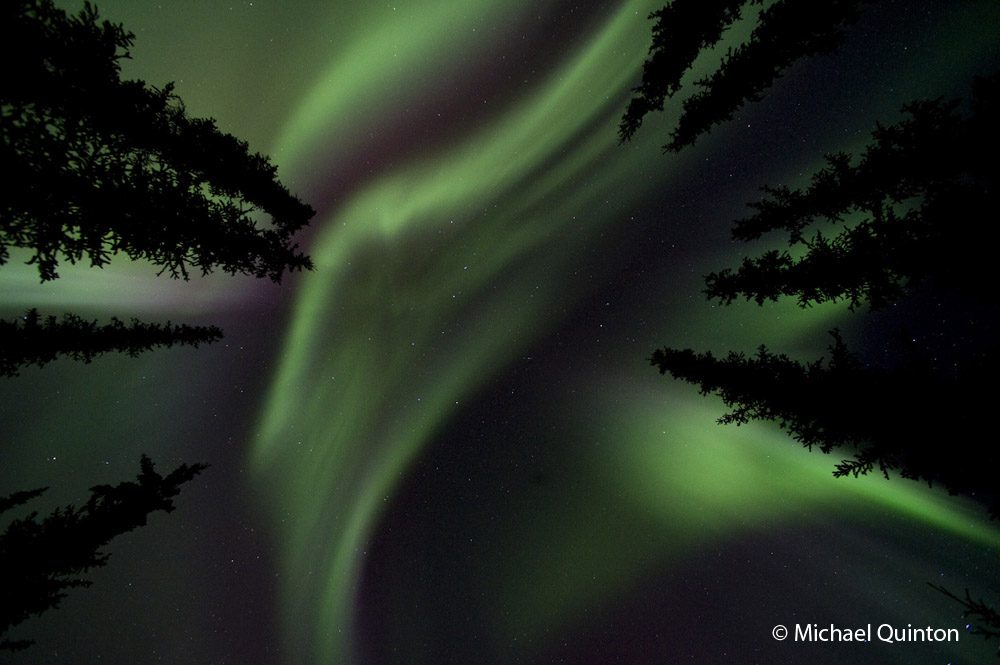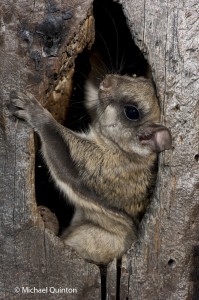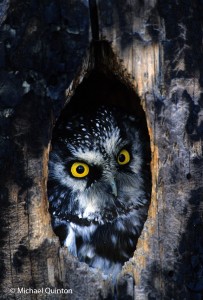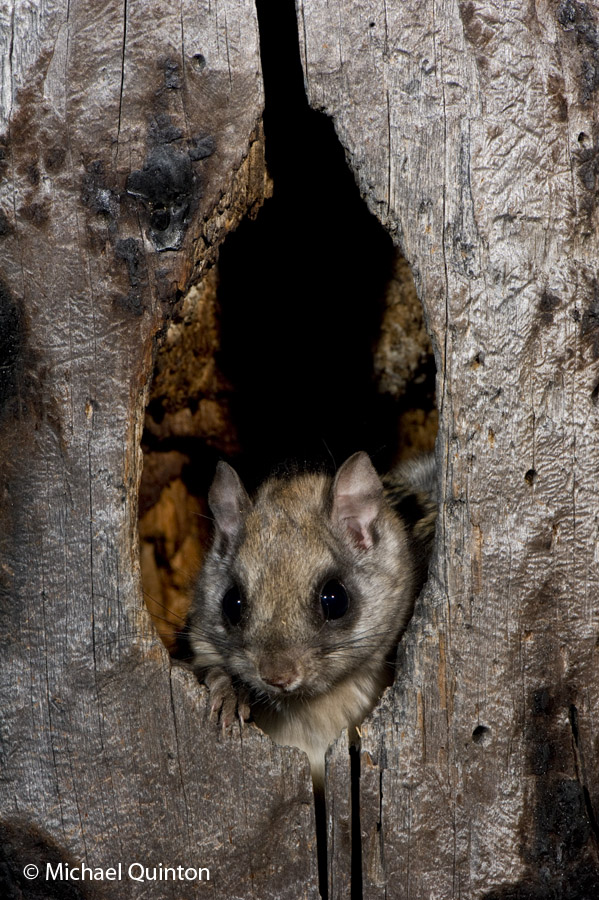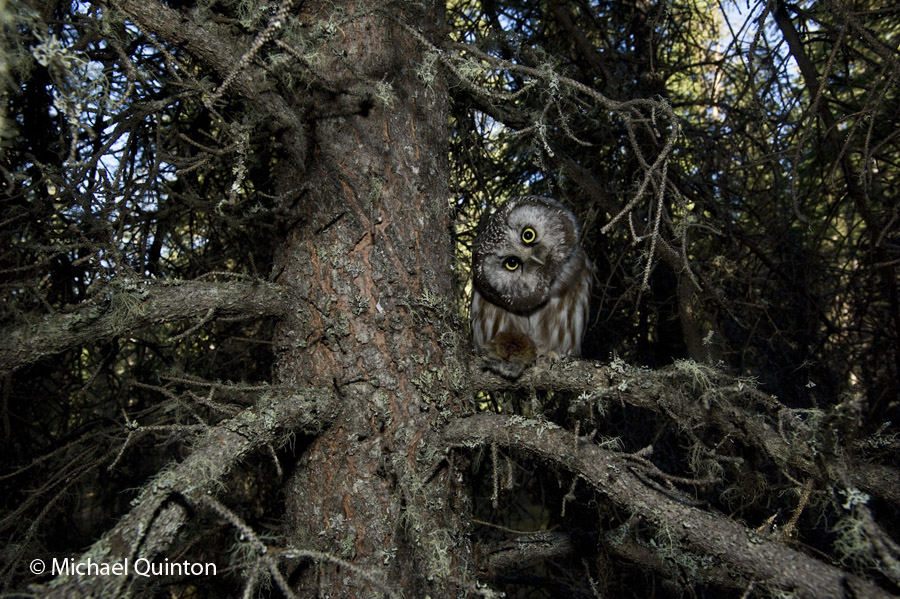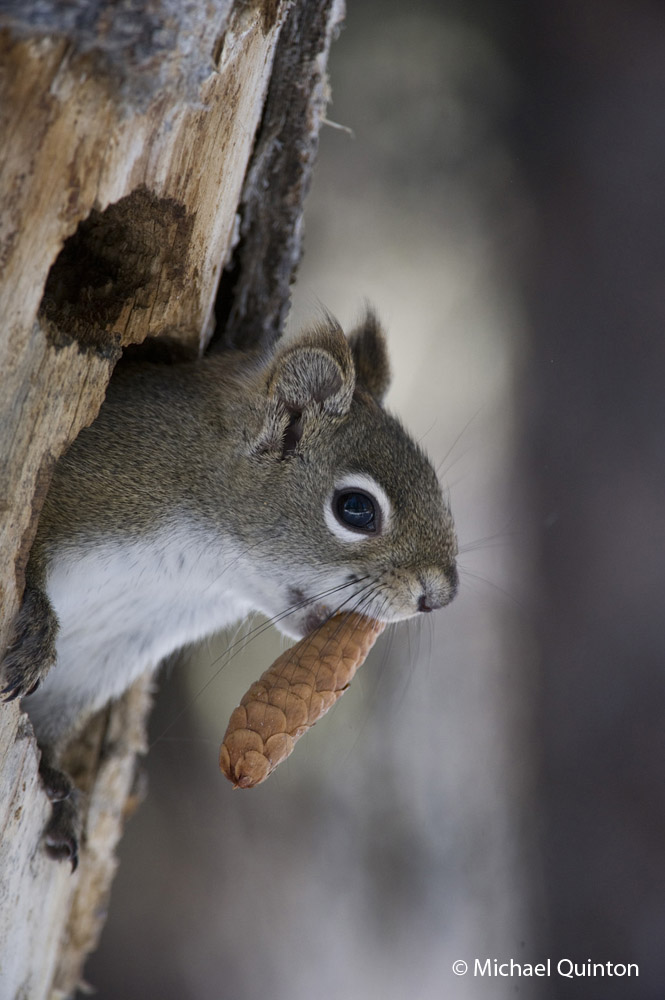
Red squirrel has cached black spruce cones in an old flicker hole.
RED SQUIRREL
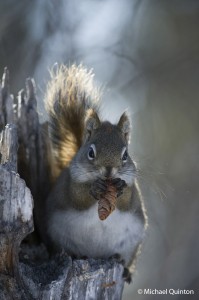 I am still on my backyard safari. This is where I do some of my favorite work. I have had professional photographers scoff at the mere suggestion of doing in-depth work with such “insignificant” species as the red squirrels, voles and the like. But I happen to enjoy photographing all species of wildlife including red squirrels. The idea of a backyard safari is to give one the incentive to compile a complete coverage of the wildlife in your immediate surroundings as well as gaining experience turning photographic potential into great photographs.
I am still on my backyard safari. This is where I do some of my favorite work. I have had professional photographers scoff at the mere suggestion of doing in-depth work with such “insignificant” species as the red squirrels, voles and the like. But I happen to enjoy photographing all species of wildlife including red squirrels. The idea of a backyard safari is to give one the incentive to compile a complete coverage of the wildlife in your immediate surroundings as well as gaining experience turning photographic potential into great photographs.
Red squirrel pry the scales off a spruce cone and feeds on the tiny seeds.
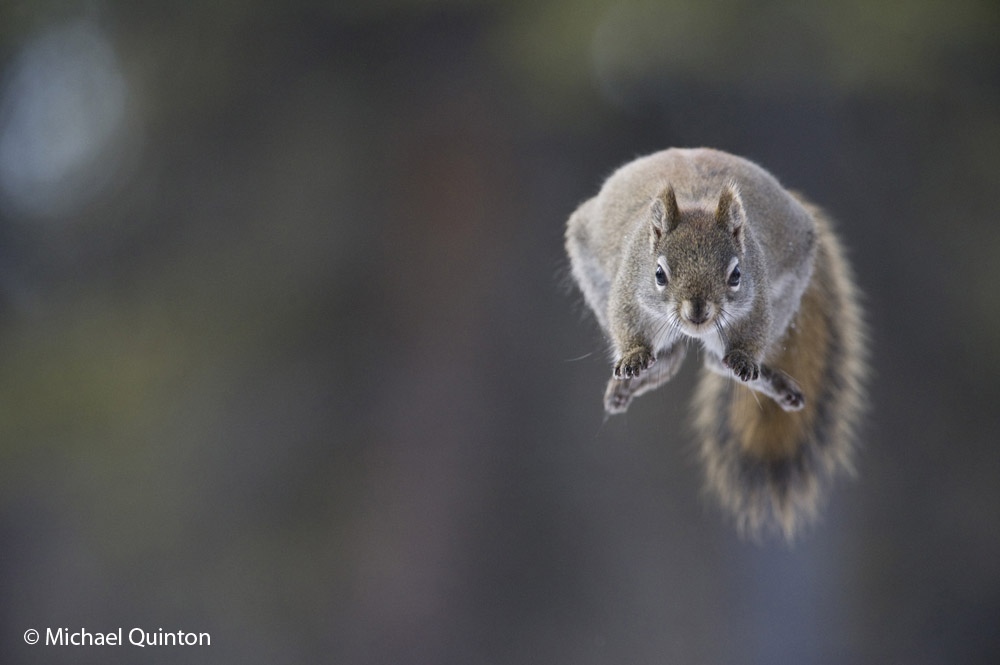 Red squirrel jumping.
Red squirrel jumping.
The red squirrel jumping straight on is a tough one. I found a place where the squirrel routinely jumps form one branch to another. The distance is just over three feet and it takes less than a second. The problem lies in the tiny amount of depth of field with the 560 mm telephoto lens. I use a Nikon 200-400 lens with a 1.4 tele-extender and pre-focus at about 4 meters. There is less than one inch that will be in sharp focus. I manage to get off about three frames each time the squirrel jumps and only about one in fifty photos will be in focus. What that boils down to is about one photo every four days will be a keeper. I could increase the percent of successful shots by adding a trigger which trips the shutter as the squirrel crosses a beam of infra-red light. Maybe next week.
TRACKS
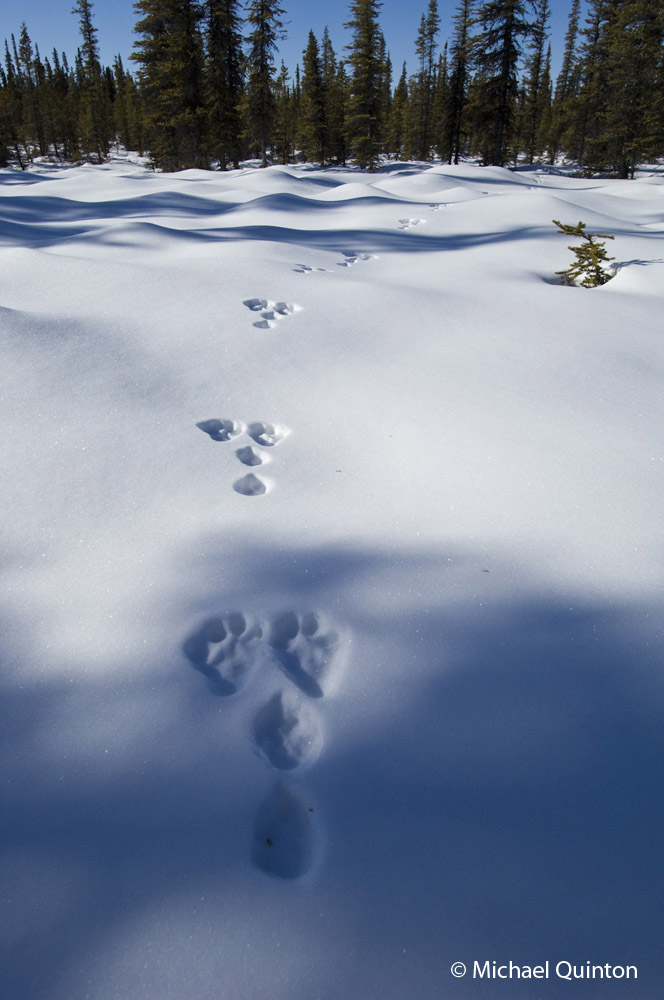
One of the few sets of snowshoe hare tracks I have seen in the backyard this winter. They are currently at the low-end of their population cycle.
BOREAL OWL
The male boreal owl is still calling from the flicker holes but not every night. I suspect he is also singing his territorial songs from other possible nesting sites in the area.
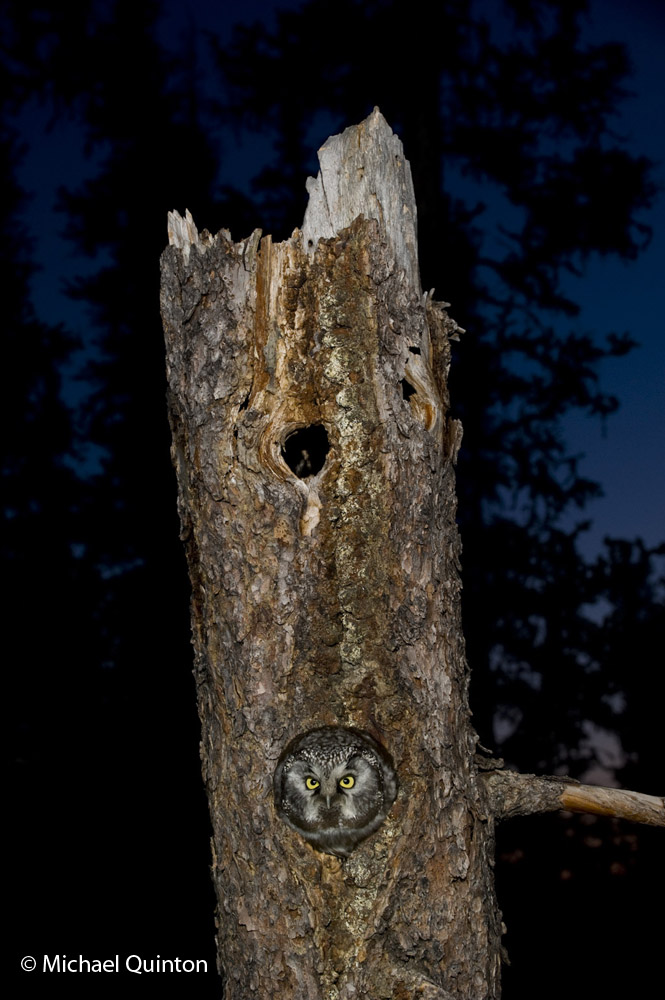
The male boreal owl begins his territorial songs just before dark.
AURORA BOREALIS
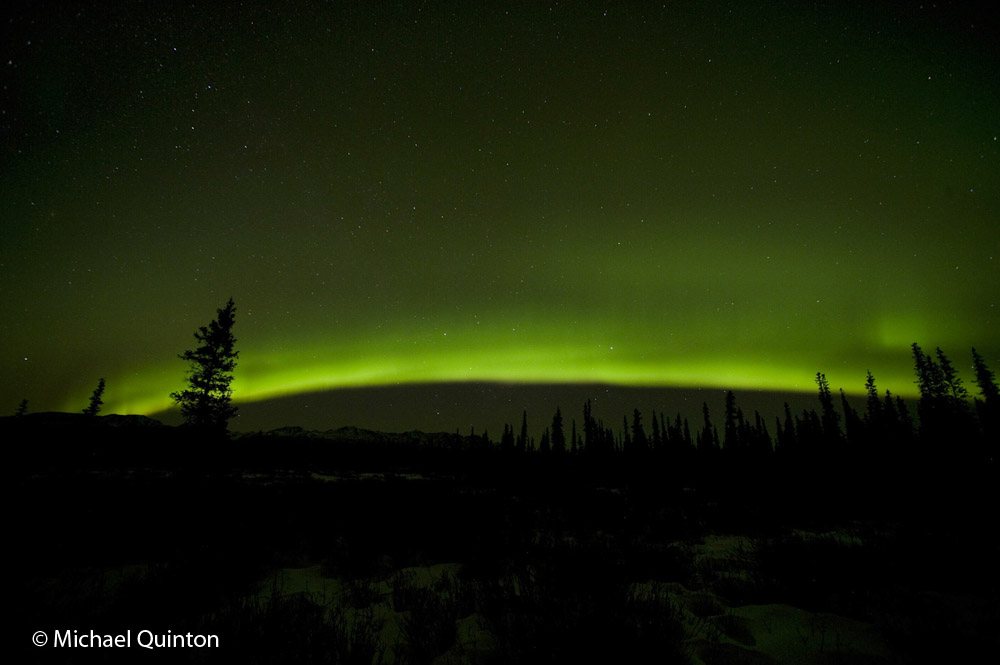
The aurora borealis usually begins with a band of green, glowing light in the northeast.
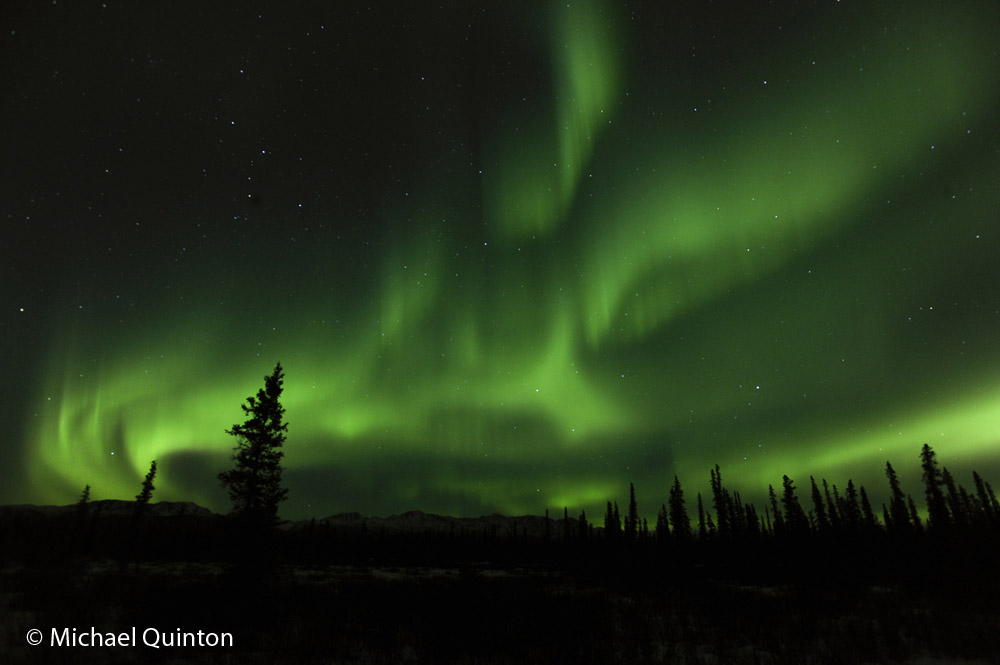
Aurora begins to dance.
